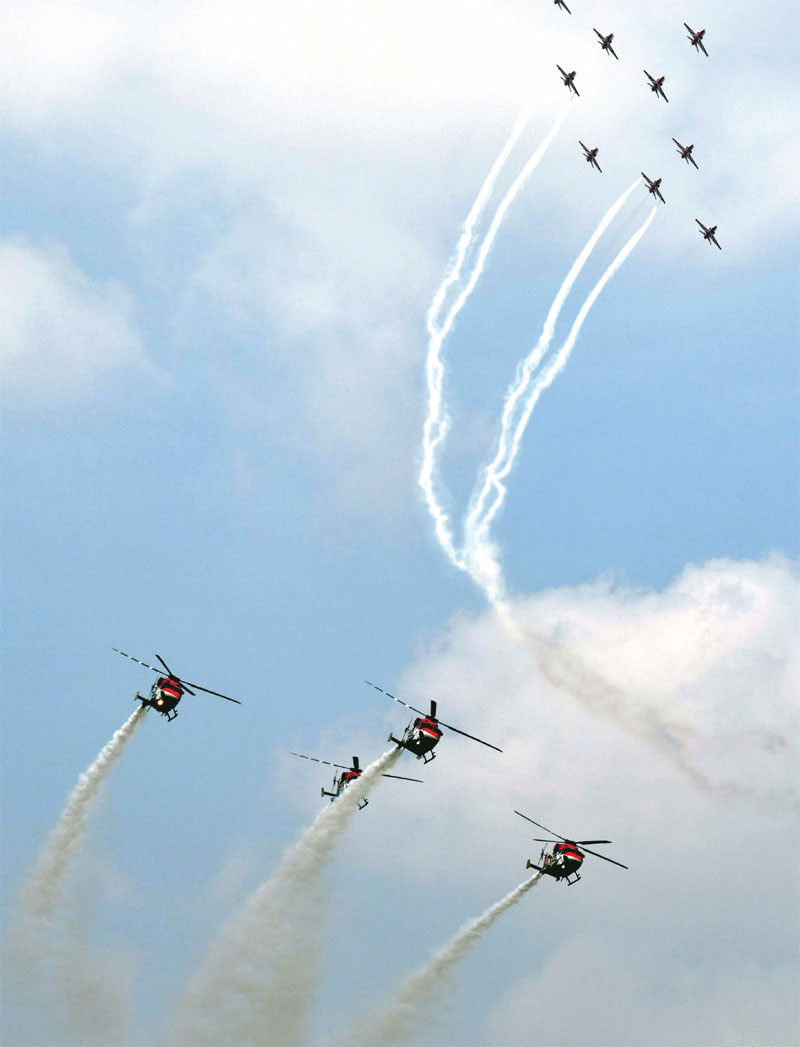The proposed theatre structures must not clip air force’s wings
 Air Marshal Ramesh Rai (retd)
Air Marshal Ramesh Rai (retd)
A century has elapsed since armies and navies first experimented with airplanes as elements of warfighting. In the ensuing years, airpower has become integral to the conduct of modern warfare, and in the past several decades, its central element. Its use and effects are an increasingly important matter, and it would be fair to say that while characteristics of land and sea power, remain more familiar to most, airpower remains esoteric.
Airpower is a vast subject for our political and military leaders to fully imbibe its tenets. It is also quite demanding. Hence, they do not give much attention to how best to control and organise it to enhance nation’s military power. The statement from the CDS equating airpower with artillery and engineers in support of land warfare bears testimony to the existence of such habitude. This lack of understanding is also manifesting itself in dysfunctional theatre structures that will inherently stymie the application of airpower to its full capacity and capability. It is therefore important that we fully comprehend airpower’s uniqueness and how it must be employed in our context, and combined to enhance military power, lest it costs us a war. Some compelling considerations that impinge on its use and on the construct of our theatres are discussed in the following paragraphs.
A future war is likely to be multi-domain and multi-dimensional and will require to be dominated in each domain. Which force is to be applied when, in what quantity, and in what sequence would depend largely on the ensuing operational situation and governed by the emerging operational contingency. Given the diverse forms in which such a confrontation can manifest in our midst, the tactical, operational, and strategic value of airpower will always be situational. Therefore, our theatre structures must provide for airpower to manifest its prowess in the entire spectrum and at all levels of war. This fundament where air power is employed to dominate the air domain and combine as co-equals to fight a collective war, must be the strategic covenant to carve them.
Our belligerents lie conjoined on our western and northern borders and could threaten us individually or in collusion/ support of each other. This situation of a two-front war is typical to India. Our adversaries have strong air forces, that far outweigh ours both in numbers and technology. Our air force assets are just sufficient to counter a single front contingency and hence would have to be multiplexed on both sides, to contain a two-front situation. Only such employment can make up for the lesser numbers.

Even this would require combining speed, ubiquity, agility, quick turnaround, and concentration of mass with distinctive tactical and strategic acumen, for which, central execution of the air campaign with the entire force under one command, would be imperative. Our theatre commands, on the contrary, gestate dividing the air force into the five proposed theatres. This would be highly undesirable and inadmissible as division of an already outnumbered force will immensely enhance asymmetry in favour of the enemy, in each theatre, whereupon losing the air advantage across both fronts would be a certainty. In the words of Field Marshal Bernard L. Montgomery, ‘If we lose the war in the air, we lose the war and we lose it quickly’. By dividing the air force, this is where we will be headed.
The tenet of airpower employment that is often inadequately understood by land commanders is that aircraft have large radii of action and a wide mix of weapons and hence even when based at one geographic location can carry out operations anywhere in India’s geographical war space. This inherent ability to traverse distances across theatres and engage targets within a short period and in the same mission would need to be exploited without falling prey to theatre structures and boundaries, in a two-front contingency. Talking about theatre commands, Dr K Subramanian, chairman of the Kargil Review Committee, said in an email exchange with Taxila institute that ‘60 squadrons’ would be required for a theatre command structure. The doyen of Indian strategic thought had seen through two decades ago, that creating such a structure with a 30-squadron force, would be operationally unviable.
The need for Central orchestration of aerial forces was even felt in Operation Desert Storm, despite the abundance of airpower. In our case, it would be a necessity as argued above. A Rand Corporation note evaluating employment of airpower in the Gulf says that the role of the Joint Force Air Component Commander was never put to the test as the sheer mass of airpower available allowed the command to employ it inefficiently at times and to cater to the doctrinal preferences of the various services. We cannot afford inefficient employment. Airpower theorists have argued passionately and often aggressively, since WW I, for organisations in which airpower operates with relative independence. In his book, Command of the Air, Giulio Douhet, an eminent Italian airpower theorist argues in its favour and advocates that not only must airpower practitioners understand this percept of airpower themselves, but also educate the powerful army and naval traditionalists.
It is the enduring properties that characterise and distinguish airpower from other forms of military power that need to be understood. The first among them is the ability of airpower to bypass the enemy’s army, navy, and terrain to prevent the movement of follow-on land or naval forces which gives air power unique capability to strike at targets deep in hostile territory without first achieving success on the surface battlefield. Preventing follow on forces to join the main battle decides the outcome of a surface war, more than the initial numbers as per an analysis of the Yom Kippur war of 1973 carried out by US forces.
For deep strikes, however, the aircraft need to penetrate enemy air defences, which will not be a simple matter when facing strong opponents like ours. Hence, the preeminent importance the air force places on achieving air superiority as a precondition for support to land operations and for retaining airpower assets together, especially support elements like AWACS, flight refuellers, Electronic Warfare, since these are so few in our inventory. The fluidity, flexibility and the combination required for employment for air superiority, strikes and support to surface forces, makes the dynamics of airpower employment distinctive. This more than any other factor lies behind the argument of its centrality since it requires those commanding it, to possess a degree of ‘air-mindedness’ not typically in the realm of surface force commanders.
Asymmetry in favour of the enemy in each theatre as discussed earlier would always work to our disadvantage. During war, a stronger side looks for the enemy and defeats him wherever he is found. A weaker side avoids being found and hides. Weakened in each theatre, we would have to avoid the air war, rendering own air force’s offensive capability and capacity unusable and making our land forces vulnerable to enemy air action. Providing support to surface forces is one of the important tasks for any air force, but in doing so, the biggest flaw and inappropriate use would be to utilise airpower solely as an auxiliary to the army and navy. Its employment primarily to assist land and sea forces would leave little or no aerial force left to fight for air superiority and air defence. Inadequate air defence would make it easy for the enemy air force to interfere with our surface operations which would be a recipe for disaster.
You must be logged in to view this content.

